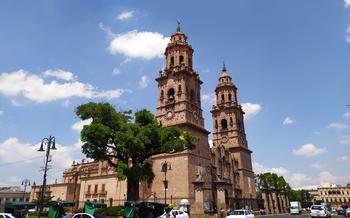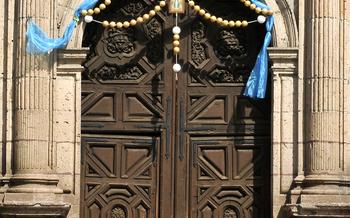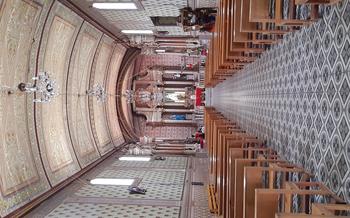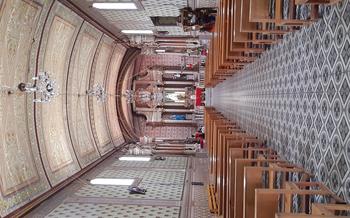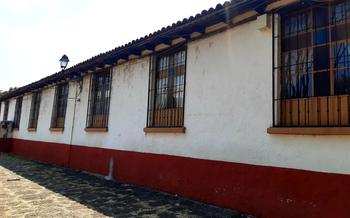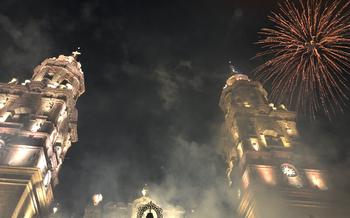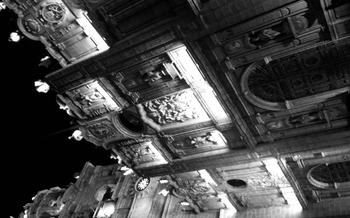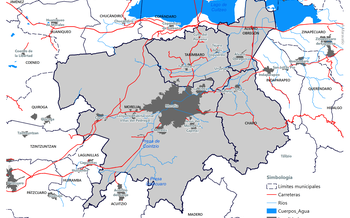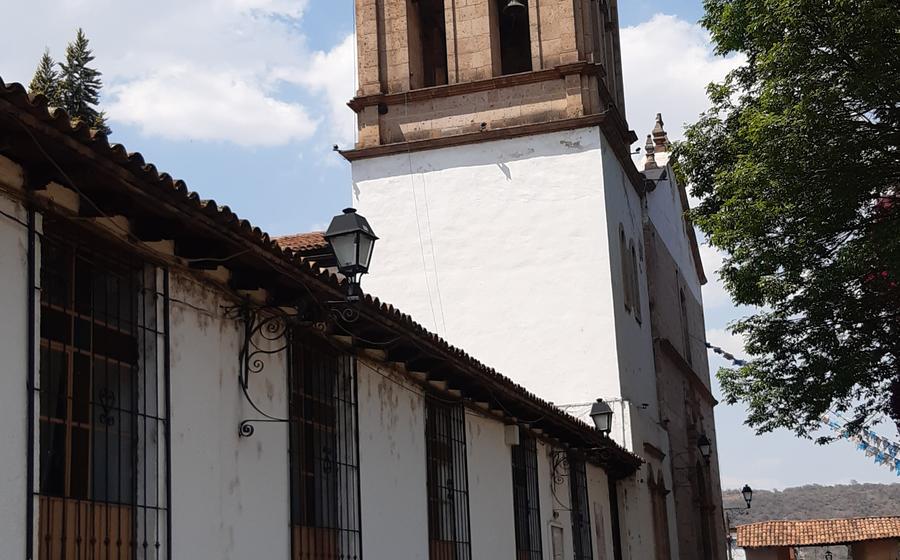
Las Yácatas en Tzintzuntzan
- A Journey to Tzintzuntzan: Unraveling the Secrets of Las Yácatas
- First Glimpse of Las Yácatas
- Exploring the Archaeological Zone
- The Main Yácatas and Surrounding Structures
- Museo de Sitio de las Yácatas
- Views from the Summit
- A Walk Through History
- The Market of Tzintzuntzan: A Vibrant Hub of Local Life
- Day of the Dead Celebrations
- Festivals and Events
- Local Cuisine and Drinks
- Nature and Outdoor Activities
- Hiking and Biking Trails
- Water Sports and Recreation
- Camping and Eco-Lodges
- Nearby Attractions
- Practical Tips for Visitors
- Insider Tip
A Journey to Tzintzuntzan: Unraveling the Secrets of Las Yácatas
In the heart of Michoacán, Mexico, lies the captivating array of pre-Hispanic ruins, colonial architecture, and vibrant traditions that beckon travelers from around the world. Among its many attractions, the ancient ceremonial center of Las Yácatas stands as a testament to the ingenuity and grandeur of the Purépecha civilization.
Tzintzuntzan's rich history dates back to the pre-Columbian era, when it served as the political and religious center of the Purépecha Empire. The city flourished under Purépecha rule, becoming a hub of trade, agriculture, and cultural exchange. However, with the arrival of the Spanish conquistadors in the 16th century, Tzintzuntzan's glory days came to an end. The city was largely abandoned, and its magnificent structures were left to decay.
In the 20th century, archaeologists began to uncover the secrets of Las Yácatas, revealing a complex and sophisticated society that once thrived in this region. Today, Las Yácatas stands as a symbol of the Purépecha heritage, attracting visitors who seek to immerse themselves in the history and culture of this ancient civilization.
Getting to Tzintzuntzan from Morelia is a breeze, with regular buses and taxis departing from the city's central bus station. The journey takes about an hour, offering travelers a chance to admire the picturesque landscapes of Michoacán along the way. Whether you choose to embark on a day trip or extend your stay to fully explore the region's treasures, Tzintzuntzan promises an unforgettable adventure.
First Glimpse of Las Yácatas
Las Yácatas, a testament to the grandeur of the Purépecha civilization, lies just a short distance from the town of Tzintzuntzan. To reach this archaeological gem, visitors can take a leisurely stroll or hire a local guide for a more immersive experience. The entrance fee is minimal, making it an affordable attraction for budget travelers.
Upon entering the site, visitors are immediately struck by the sheer size and majesty of the structures. The yácatas, towering over the surrounding landscape, exude an aura of ancient power. The grounds are meticulously maintained, allowing visitors to freely explore the various platforms, ramps, and tunnels that connect these impressive structures.
Navigating through the archaeological zone is a journey through time, revealing hidden corners and providing glimpses into the lives of the Purépecha people. Each yácata, with its unique architectural features, serves as a reminder of the ingenuity and craftsmanship of this pre-Hispanic civilization.
Exploring the Archaeological Zone
The Purépecha civilization, also known as the Tarascans, flourished in the region from the 12th to the 16th century. They were known for their advanced agricultural practices, hydraulic engineering, and sophisticated social organization.
Las Yácatas were the ceremonial and religious center of the Purépecha capital city of Tzintzuntzan. The site consists of several pyramids, temples, and altars, arranged in a complex layout that reflects the Purépecha's understanding of the cosmos and their relationship with the divine.
The main pyramid, known as Yácatas Matlzin, is a massive structure that dominates the site. It has a square base and a stepped profile, with a staircase leading to the top. The other yácatas, or platforms, vary in size and shape, each serving a specific purpose in the religious ceremonies and rituals performed by the Purépecha priests.
The architecture of Las Yácatas is unique and distinctive. The yácatas are constructed using large blocks of stone, carefully fitted together without the use of mortar. The walls are adorned with intricate carvings and sculptures, depicting gods, animals, and geometric patterns. These carvings provide valuable insights into the Purépecha's mythology, beliefs, and artistic expressions.
The Main Yácatas and Surrounding Structures
The most prominent structure within the Las Yácatas archaeological zone is the Yácatas Matlzin, which stands as the largest pyramid. Its imposing presence and intricate architectural details captivate visitors. As you approach the yácata, the sheer size and grandeur of the structure become evident. The pyramid's base is adorned with intricate carvings and symbols, hinting at the significance and purpose it held for the Purépecha civilization.
Surrounding the main yácata are several smaller yácatas, each with its unique characteristics. Some yácatas feature multiple terraces, while others have different sizes and shapes. These variations suggest that they may have served different functions or were constructed at different periods. The site also includes a ball court, a common feature in Mesoamerican cultures, as well as other ceremonial spaces.
One of the most intriguing aspects of these structures is the ongoing debate surrounding their exact purpose. While it is widely believed that the yácatas served as ceremonial centers, there are several theories about their specific uses. Some scholars suggest that they were used for religious rituals, while others propose that they were astronomical observatories or even fortifications.
Exploring the various yácatas and surrounding structures allows you to unravel the mysteries of this ancient civilization and gain a deeper understanding of their beliefs, practices, and way of life. Each structure holds its own secrets, waiting to be discovered by curious travelers who venture into the heart of Las Yácatas.
Museo de Sitio de las Yácatas
Adjacent to the archaeological zone, the Museo de Sitio de las Yácatas is a treasure trove of cultural artifacts and historical insights. The museum houses a diverse collection of pottery, stone sculptures, tools, and ritual objects, providing a glimpse into the daily life and traditions of the Purépecha people. Interactive exhibits and multimedia displays bring the ancient civilization to life, showcasing their artistic skills, religious beliefs, and social organization.
The museum serves as a vital resource for researchers and visitors alike, offering a deeper understanding of the Purépecha culture and its enduring legacy. Whether you're a history buff or simply curious about the region's past, a visit to the Museo de Sitio de las Yácatas is an enriching experience that complements your exploration of the archaeological zone.
Views from the Summit
Climbing to the top of the main yácata, Yácatas Matlzin, is a must-do for breathtaking panoramic views. The effort is more than worth it as you reach the summit and are greeted with vast and stunning landscapes. The glistening waters of Lake Pátzcuaro stretch out before you, framed by rolling hills and lush vegetation. The surrounding countryside unfolds like a tapestry, showcasing the natural beauty of the region.
From this vantage point, you can appreciate the strategic importance of the site's location. The Purépecha people chose this spot for a reason. The elevated position provided them with a commanding view of the surrounding area, allowing them to monitor their territory and keep an eye on potential threats. It also served as a way to communicate with other settlements using smoke signals or beacon fires.
Take your time at the summit to soak in the views and capture some memorable photos. The panoramas from Las Yácatas offer a unique perspective that will leave you with lasting impressions of this ancient ceremonial center.
A Walk Through History
Tzintzuntzan's rich history and cultural heritage extend beyond the archaeological zone. Take a leisurely stroll through the town to discover its colonial charm and significant landmarks. Visit the Templo de San Francisco, a stunning example of 16th-century architecture, with its intricate facade and beautiful interior. Explore the town's cobblestone streets, admire the colorful colonial buildings, and soak in the ambiance of a bygone era.
Discover the Casa de la Cultura, which houses a museum showcasing the town's history and traditions. Learn about the Purépecha people's way of life, their customs, and their role in shaping the region's cultural identity. Engage with the locals, who are proud of their heritage and eager to share their stories.
End your day with a delicious meal at one of the local restaurants. Savor the flavors of traditional Purépecha cuisine, such as corundas (steamed corn cakes) and uchepos (corn soup with beans and squash), while enjoying the warm hospitality of the town's people.
The Market of Tzintzuntzan: A Vibrant Hub of Local Life
Strolling through the vibrant market of Tzintzuntzan is an immersive experience that transports visitors into the heart of local life. A cacophony of sounds, colors, and aromas fills the air as vendors eagerly display their wares and shoppers haggle for the best prices.
Handicrafts made by local artisans abound, from intricate woven baskets and colorful pottery to hand-embroidered textiles and traditional wooden masks. Visitors can marvel at the skill and creativity of these artisans as they browse through their unique creations.
The market is also a culinary paradise, where visitors can sample traditional street food and delicacies. From freshly grilled meats and handmade tortillas to sweet pastries and tropical fruits, there's something to satisfy every palate. Be sure to try the local specialty, "charales" (fried small fish), for a truly unique culinary treat.
Interacting with the friendly vendors is a highlight of the market experience. They are more than happy to share stories about their products and the traditions behind them. Visitors can learn about the significance of certain items, the techniques used to create them, and the importance of preserving local craftsmanship.
Whether you're looking for souvenirs, handicrafts, or a taste of local cuisine, the market of Tzintzuntzan is a must-visit destination. It offers a vibrant glimpse into the daily life of the Purépecha people and a chance to take home a piece of their rich cultural heritage.
Day of the Dead Celebrations
The Day of the Dead, or Día de los Muertos, holds immense significance in the Purépecha culture. This annual celebration honors and remembers deceased loved ones with unique traditions and rituals. In Tzintzuntzan, the festivities begin on October 31st and continue until November 2nd. During this time, the town transforms into a vibrant spectacle of colors, music, and spirituality.
Families construct elaborate altars adorned with marigolds, candles, food offerings, and personal belongings of the deceased. These altars are believed to guide the spirits back to their earthly homes. Cemeteries come alive with families gathering to decorate graves, share stories, and spend the night beside their departed relatives.
Visitors can witness the colorful processions that wind through the streets, featuring participants dressed in traditional costumes and face paint. Traditional dances and music performances fill the air, creating a mystical atmosphere. The Day of the Dead in Tzintzuntzan is a captivating blend of ancient traditions and contemporary expressions of grief and remembrance.
Festivals and Events
Tzintzuntzan comes alive with vibrant festivals and events throughout the year, offering visitors a chance to immerse themselves in the town's rich cultural heritage. Join in the lively celebrations, witness traditional dances, and listen to enchanting music performances that showcase the unique traditions of the Purépecha people. Participate in colorful processions, where locals don elaborate costumes and parade through the streets, filling the air with joy and camaraderie. These festivals provide an opportunity to connect with the community, learn about their customs, and experience the infectious energy that makes Tzintzuntzan a truly special destination. Don't miss the chance to immerse yourself in the festive spirit and create lasting memories in this enchanting town.
Local Cuisine and Drinks
Indulge in the flavors of Tzintzuntzan's traditional Purépecha cuisine, a delightful blend of indigenous and Spanish influences. Savor the iconic corundas, triangular-shaped tamales made with fresh corn and filled with savory meats or vegetables. Try uchepos, a hearty soup featuring tender beans, flavorful pork, and aromatic herbs. Don't miss the traditional pozole, a rich and flavorful broth with hominy, meat, and a variety of toppings.
Complement your culinary journey with local beverages that reflect the region's unique character. Sip on mezcal, a smoky and flavorful spirit distilled from roasted agave hearts, or pulque, a fermented beverage made from the sap of the maguey plant. Discover the distinct flavors and aromas of these traditional drinks, deeply rooted in the Purépecha culture.
Embark on a culinary adventure at local restaurants or street vendors, where you can sample authentic dishes prepared with fresh, local ingredients. Immerse yourself in the vibrant atmosphere of the town's markets, where you can haggle for souvenirs and handicrafts while indulging in delicious street food and delicacies.
Indulge in the culinary delights of Tzintzuntzan, where every bite tells a story of cultural heritage and tradition.
Nature and Outdoor Activities
Beyond the historical and cultural exploration of Tzintzuntzan, the region offers a diverse range of natural attractions and outdoor activities. The enchanting landscapes surrounding Lake Pátzcuaro invite visitors to immerse themselves in the beauty of the natural world.
Hiking and Biking Trails
For those who love to explore on foot or on two wheels, there are numerous hiking and biking trails that wind through the scenic countryside. These trails offer breathtaking views of the lake, rolling hills, and lush forests. Whether you prefer a leisurely stroll or an adventurous mountain bike ride, there is a trail to suit every level of fitness and interest.
Water Sports and Recreation
Lake Pátzcuaro is a paradise for water sports enthusiasts. Visitors can enjoy swimming, kayaking, canoeing, and fishing in the tranquil waters of the lake. There are also opportunities for sailing and windsurfing, allowing you to glide across the water and soak in the stunning views from a unique perspective.
Camping and Eco-Lodges
For those who seek a closer connection with nature, camping and eco-lodges offer an immersive experience in the tranquil surroundings of Tzintzuntzan. Pitch your tent under the starry sky or opt for a sustainable eco-lodge that blends comfort with environmental consciousness. These accommodations allow you to fully appreciate the region's natural beauty and tranquility.
Nearby Attractions
Beyond the captivating charm of Tzintzuntzan and Las Yácatas, the surrounding region unveils a treasure trove of historical and natural wonders. Embark on a journey to Ihuatzio, a neighboring town steeped in pre-Hispanic history. Explore the ancient ruins of Ihuatzio, once the capital of the Purépecha Empire, and marvel at the remnants of its glorious past. Discover the sacred Templo Mayor, a testament to the region's rich cultural heritage.
Venture further to Tingambato, another pre-Hispanic site that boasts a remarkable collection of petroglyphs. These ancient rock carvings offer a glimpse into the beliefs and traditions of the Purépecha people. Admire the intricate designs and symbols that adorn the rocks, providing a fascinating connection to the past.
Enrich your exploration by visiting the colonial town of Pátzcuaro, renowned for its well-preserved architecture and historical significance. Stroll along its cobblestone streets, admire the colorful facades of colonial buildings, and visit the Basilica of Our Lady of Health, a stunning example of Baroque architecture. Pátzcuaro is also a vibrant center for arts and crafts, offering a vibrant market where you can find beautiful handmade souvenirs.
Extend your journey to the nearby cities of Morelia and Uruapan. Morelia, the capital of Michoacán, boasts a UNESCO World Heritage-listed historic center, showcasing impressive colonial architecture and cultural landmarks. Uruapan, known as the "Avocado Capital of the World," offers a unique blend of natural beauty and cultural attractions, including the La Huatápera National Park and the Uruapan Market, renowned for its colorful handicrafts and regional delicacies.
Practical Tips for Visitors
Ensuring a Rewarding Visit to Las Yácatas
When embarking on your journey to Las Yácatas, it's essential to be prepared for the adventure. The following tips will enhance your experience and ensure a comfortable and enjoyable visit:
-
Dress Appropriately: The archaeological zone involves walking on uneven surfaces and climbing stairs. Opt for comfortable shoes with good traction and breathable clothing suitable for the weather conditions.
-
Pack Essentials: Don't forget to bring sunscreen, a hat, and sunglasses to protect yourself from the sun. Carry a water bottle to stay hydrated, especially during the warmer months. Also, pack some snacks if you plan on spending an extended period exploring the site.
-
Consider a Guided Tour: Hiring a tour guide or booking a guided tour can significantly enhance your visit. These knowledgeable guides can provide insights into the history, culture, and significance of Las Yácatas, making your experience more enriching and educational.
-
Respect Local Customs: When interacting with the local community, be mindful of their customs and traditions. Ask permission before taking photographs of people, and always treat everyone with respect and courtesy.
Insider Tip
-
To make your visit to Las Yácatas truly unforgettable, consider exploring the site during sunrise or sunset. The warm hues of the sky cast a magical glow on the ancient structures, creating a surreal and awe-inspiring atmosphere. The tranquility of the early morning or evening hours also allows for a more intimate and immersive experience, free from the hustle and bustle of daytime crowds.
-
If possible, plan your visit on a weekday to avoid the weekend rush. This way, you can enjoy a more peaceful and serene exploration of the archaeological zone, without having to navigate through large groups of tourists. The weekday tranquility allows you to fully appreciate the site's grandeur and connect with its ancient history on a deeper level.
-
For a unique culinary treat, be sure to try the local dish known as "charales." These tiny fried fish are a delicacy in the region and can be found at many local restaurants and street vendors. Their crispy texture and savory flavor are sure to tantalize your taste buds and leave you craving for more.
